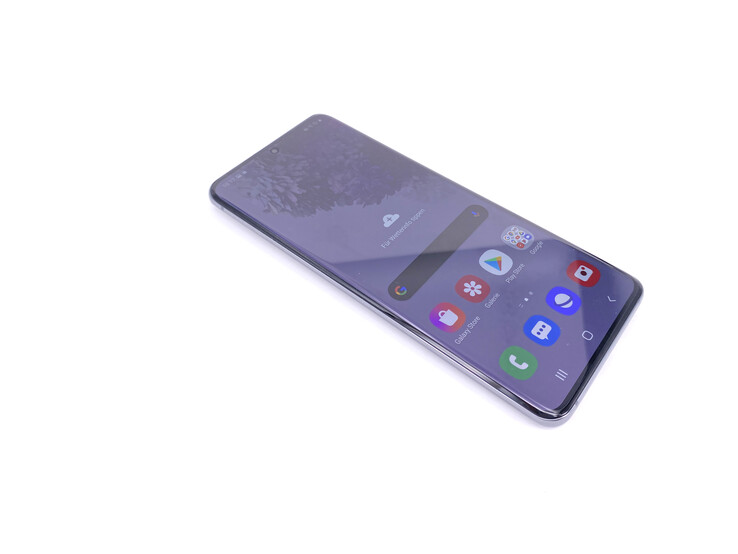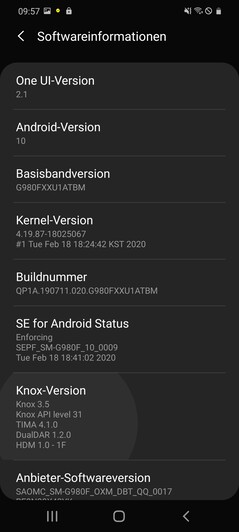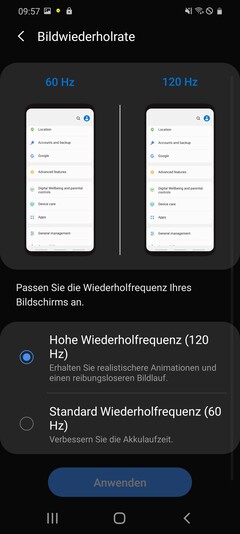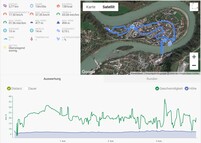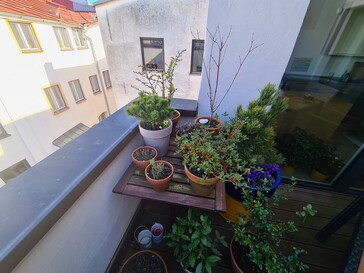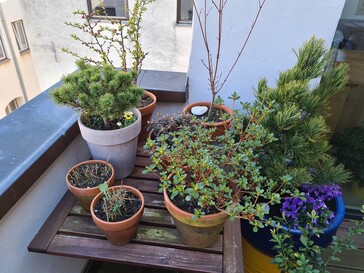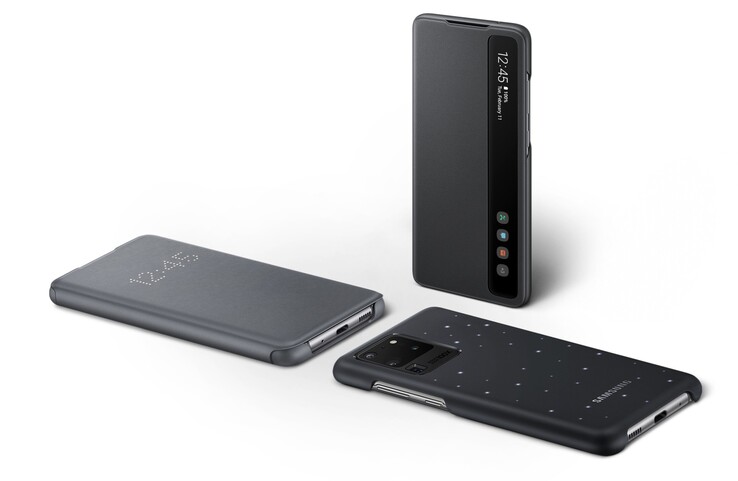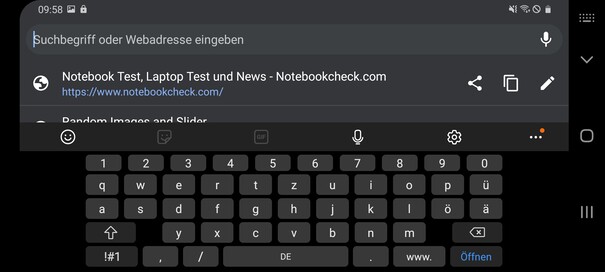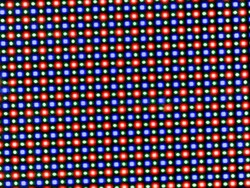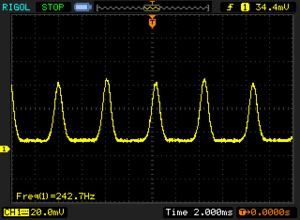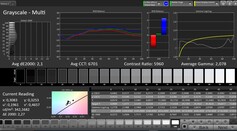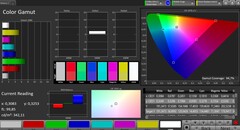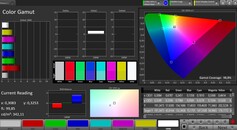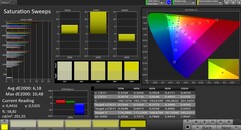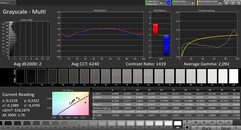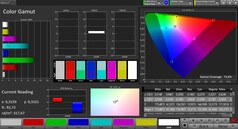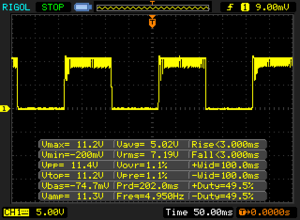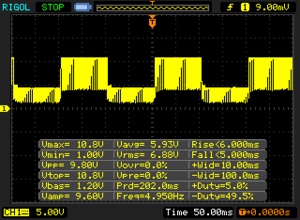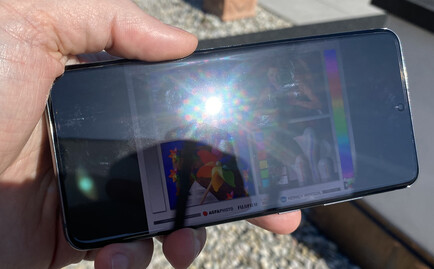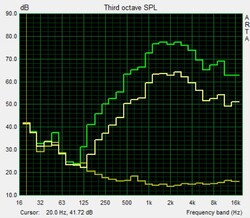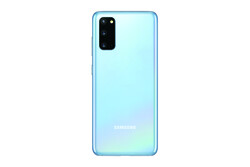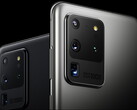Samsung Galaxy S20 Smartphone Review – High-Quality Smartphone with Quirks
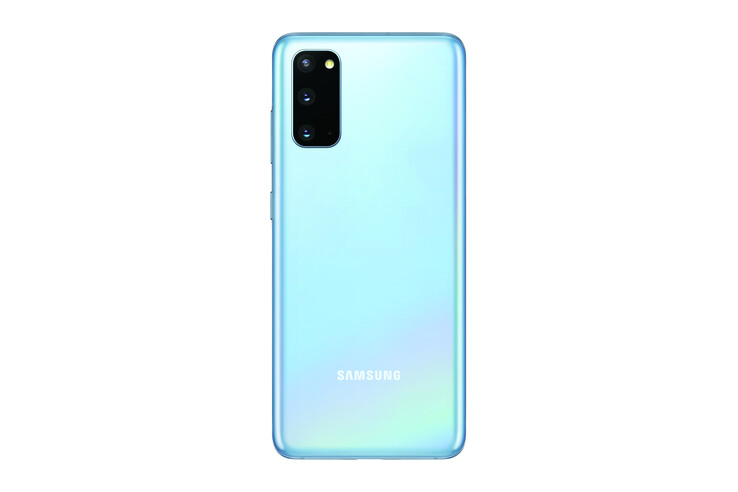
Like every year Samsung’s update to its Galaxy S series was highly anticipated. Following the current trend there are now more models available servicing a wide array of needs and wants.
In this review, we take a look at the smallest and most affordable Galaxy S series smartphone, the Samsung Galaxy S20, which is available as a 4G and a 5G model:
- Samsung Galaxy S20 4G 128GB storage / 8 GB RAM: $849
- Samsung Galaxy S20 5G 128 GB storage / 12 GB RAM: $999
Like last year Samsung is hoping to take the lead in regards to performance, photo, and video quality with its high-end smartphones. The main 64 MP camera (108 MP are only available on the Galaxy S20 Ultra 5G) supports 8K video, a 3x hybrid-optical zoom, and supposedly offers a great low-light performance to boot.
However, Samsung’s competitors have leveled up considerably in the past few years, and it is getting increasingly harder for Samsung to fight them all off at the same time. Time to find out how the Galaxy S20 performed in our test.
Comparison Devices
Rating | Date | Model | Weight | Drive | Size | Resolution | Price |
|---|---|---|---|---|---|---|---|
| 87.7 % v7 (old) | 03 / 2020 | Samsung Galaxy S20 Exynos 990, Mali-G77 MP11 | 163 g | 128 GB UFS 3.0 Flash | 6.20" | 3200x1440 | |
| 86.5 % v7 (old) | 09 / 2019 | Apple iPhone 11 A13 Bionic, A13 Bionic GPU | 194 g | 64 GB SSD | 6.10" | 1792x828 | |
| 87.4 % v7 (old) | 03 / 2019 | Samsung Galaxy S10 Exynos 9820, Mali-G76 MP12 | 157 g | 128 GB UFS 2.1 Flash | 6.10" | 3040x1440 | |
| 85.8 % v7 (old) | 10 / 2019 | OnePlus 7T SD 855+, Adreno 640 | 190 g | 128 GB UFS 3.0 Flash | 6.55" | 2400x1080 | |
| 89 % v7 (old) | 12 / 2019 | Huawei Mate 30 Pro Kirin 990, Mali-G76 MP16 | 198 g | 256 GB UFS 3.0 Flash | 6.53" | 2400x1176 | |
| 83.3 % v7 (old) | 12 / 2019 | Xiaomi Mi Note 10 SD 730G, Adreno 618 | 208 g | 128 GB UFS 2.0 Flash | 6.47" | 2340x1080 |
Case – Slim and Protected from the Elements
The Galaxy S20 is a slim smartphone with a 20:9 aspect ratio display. As such, it is easy for people with smaller hands to use due to its great reachability all the way into the corners. The device is very comfortable to hold in hand.
The case itself is made of glass and metal. Depending on color its glossy rear cover can be iridescent. Our gray review model was timeless yet at the same time modern thanks to its slim bezels.
When knocking on the rear cover the Galaxy S20 sounds hollow on the inside, and we were able to flex the rear cover slightly, both of which does not bode well for subjective quality. We were even able to make out a very quiet creaking noise in some areas. The transition between metal and glass can be felt on both sides. Maybe Samsung should have been a little bit more meticulous in designing the case. Nevertheless, the Galaxy S20 feels like the expensive premium device it aspires to be.
As before, the device is IP68-certified against ingress of dust and water, and it can be submerged in up to almost 5 feet of fresh water for up to 30 minutes.
Connectivity – Samsung Smartphone with fast Storage
All Galaxy S20 models come with 128 GB of fast UFS 3.0 storage. The only S20-series device with more storage is the S20 Ultra 5G with up to 512 GB. In return, the S20 can be expanded via microSD cards of up to 1 TB in size. Unfortunately, by doing so you have to sacrifice the secondary SIM slot and therefore the S20’s dual SIM capabilities.
Bluetooth 5.0 and NFS are expected of a high-end smartphone, and the S20 also supports ANT+ for monitoring external sensors such as heartrate monitors on your wrist or a tire pressure monitor system on your bicycle. It can also be used to operate TV sets.
Software – Up-To-Date OneUI 2.1
Samsung’s own in-house OneUI is installed in its latest incarnation, version 2.1 based on Android 10. Security patches were as of March 1 on our review unit, and thus up to date.
The S20 comes with a few preloaded third-party applications that cannot necessarily be uninstalled completely but in some cases only disabled. While this takes up storage space it is most likely not going to be a big deal considering the S20’s spacious 128 GB thereof. However, we would have certainly preferred the possibility to uninstall these undesired applications once and for all.
In addition to third-party software Samsung also includes a few in-house applications, such as Samsung Health or Samsung AR Zone for augmented reality applications. These include but are not limited to looking at furniture in your apartment or measuring distances. It also allows for some fun selfies.
Communication and GPS – Could be more Accurate
As expected, the S20 supports Wi-Fi 6 including HE80, MIMO, and 1024-QAM. It does not support 160 MHz channels, and thus not the maximum performance theoretically possible. Nevertheless, the Galaxy S20 remains one of the fastest devices among current high-end smartphones. It manages an average of more than 800 Mbps RX/TX and was only outperformed by the Huawei Mate 30 Pro. We can also see a noticeable improvement compared to its own predecessor. All tests are performed using our Netgear Nighthawk AX12 reference router.
Subjective performance was superb overall. Images are loaded almost instantaneously, and at a distance of almost 33 ft with three walls between the phone and the router reception remained very stable at between 50 and 75% signal strength. Websites loaded just as quickly as when standing right next to the router.
Supported LTE speeds are up to 2 Gbps downstream and up to 210 Mbps upstream, with a total of 22 supported LTE frequencies. This should easily cover most inhabited places on earth, and turns the S20 into a very well-suited travel companion.
As mentioned before the S20 is also available with 5G support. On the outside, the 4G and 5G models are absolutely identical, and the only internal difference apart from the 5G modem are 4 GB of extra RAM. The European 5G model, equipped with Samsung’s Exynos 990, is limited to Sub6 support. In other words: slower yet more reliable 5G. The faster short-range mmWave 5G technology is only supported on Qualcomm Snapdragon-equipped SKUs of the Samsung Galaxy S20, such as, for example, the US model.
To our surprise, the S20’s GPS module took several seconds to obtain GPS lock outdoors. On our bicycle tour the device performed very well at first, accurately recording the track and only cutting the occasional corner here and there. However, things quickly went downhill as soon as we entered narrow old-town streets and alleys. GPS accuracy faltered and decreased rapidly, and the recorded track when crossing the bridge was completely off. Unless Samsung improves GPS accuracy with an update in the near future, the S20’s usefulness as satnav is limited to those cases where utmost accuracy is of no importance whatsoever.
Telephony and Call Quality – Clear Speech with the Galaxy S20
Samsung’s own telephony app offers similar features as Google’s default app. The main difference is a slightly different layout and a design akin to that of Samsung’s OneUI. At the end of the day, it is a matter of taste.
What is not open to interpretation is the S20’s superb voice quality. When talking with somebody on the phone the transmitted voice can get very loud and remains very clear at all times. Only on maximum volume did we notice a very minor din. The opposite is also true: our own voice was recorded and transmitted very clearly. Voice transmission was also very good on speakerphone both ways regardless of how loud or quiet we were speaking ourselves.
As expected, the S20 supports all modern telephone features, such as VoLTE and VoWiFi.
Cameras – Three Lenses and 8K Video
A true 2020 high-end smartphone requires at least four backward facing lenses. In case of the S20 series, this requires the S20+ model as the more basic S20 is limited to just three lenses. The bottom lens features a 64 MP sensor for high-resolution photos. The middle lens is the one selected by default, and it offers a 12 MP sensor. Both these lenses support optical image stabilization and are supported by the LED flash located above the wide-angle lens.
Accordingly, there is no telephoto lens. Samsung promises a 3x hybrid-optical zoom, which is better than a purely digital zoom but nowhere near a real optical zoom. At least it is adjustable in very fine 0.1x steps, unlike on Samsung’s more affordable smartphones.
During our first camera tests we encountered autofocus issues with objects close-by, such as were reported by other users as well. During our review period Samsung released patch G980FXXU1ATCH, which addressed these autofocus issues very well as can be seen by looking at the flower photo before and after applying the patch. Once installed the camera took crisp photos rich in detail and color.
We also very much liked the landscape photo. Colors are popping, it is rich in detail, and there are almost no artifacts in the sky. In low-light situations the S20 handled contrasts very well and managed to brighten up the scene considerably. Sharpness was on point, and light sources did not suffer from glare. Overall a great low-light performance.
Videos can now be recorded in 8K, aka 7680 x 4320 pixels. The camera software attempts to stabilize the recording resulting in occasional duplicate outlines and a minor shake around edges. Overall, we found this effect to be somewhat odd, and fortunately it can be turned off completely. That said the fact that some effects and features, such as continuous autofocus, are not available when recording in 4K or FHD@60fps is not worthy of a high-end smartphone.
All things considered, video quality was excellent. Lighting was adequate and quickly adjusted to sudden changes in brightness, and details were captured very well overall.
The front-facing camera supports a normal and a wide-angle mode, although the photo is cropped when using the former. After all, the camera is limited to just one lens. Photos are crisp and well-lit.
In our lab we were able to test the main camera under controlled and normalized conditions for better comparability. Even with minimum light the S20’s camera still managed to capture details albeit at a significantly reduced sharpness. It did very well in bright light.
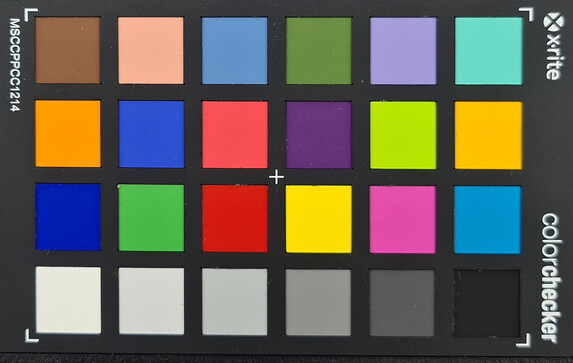
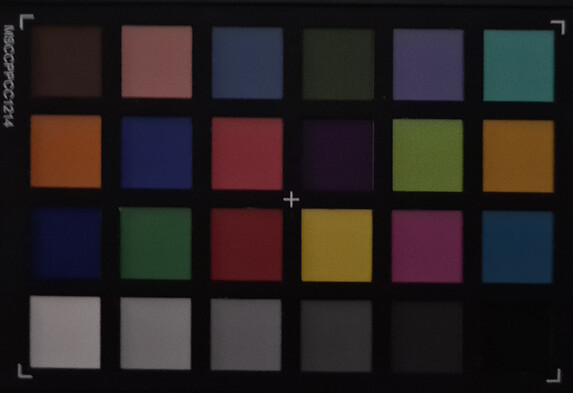
Accessories and Warranty – Wide Range of Accessories
Unlike their European cousins S20 smartphones purchased in the US are limited to just 12 months of warranty. For $12 per month you can choose to add Samsung Premium Care, which extends the manufacturer warranty and includes up to three repairs or replacements for accidental damage.
Samsung USA also offers a trade-in program for eligible smartphones that will pay up to $600, 0% APR financing for 24 or 36 months, or Samsung Upgrade with Samsung Finance allowing you to upgrade to a new Galaxy device every 12 months.
Included in the box are a 25 W USB-C charger with Super Fast Charging, a USB-C cable, a SIM tool, and a wired headset. Additional chargers can be purchased starting at $35 in Samsung’s online shop, which also carries a selection of protective covers starting at $30 for the silicone cover all the way up to $65 for the LED wallet cover or $55 for the LED back cover with notification LED features.
Input Devices and Handling – Smooth thanks to 120 Hz
The Galaxy S20’s touch screen is very accurate and feels very smooth and responsive thanks to its 120 Hz refresh rate. For example, a small gesture performed at the very top of the display is enough to lower the quick settings drop-down menu onto the display. We did not experience any slowdowns or lag during the entire review period. As already observed with other 120 Hz smartphones the difference might seem small and insignificant at first but will become glaringly obvious once you return to using a regular 60 Hz smartphone. If desired you can disable the 120 Hz mode in the S20’s settings.
As before, the in-display fingerprint reader is integrated into the display. It can be easily located with the display turned off, and worked very fast and reliably. The S20 also supports face recognition to unlock, and the display lights up if necessary to provide additional light in order to improve face detection in low-light environments. You can choose between a faster and less secure or a slower and more secure mode.
All physical buttons are located on the right-hand side and offer adequate tactile feedback. They feel very premium and offer clear and precise accentuation points.
Display – Very Bright S20 Display
For the first time ever a Samsung high-end device is available with a 120 Hz display. Like on TV sets it offers a much smoother visual experience with the added benefit of a more responsive touchscreen input experience.
At 3200 x 1440 pixels the resolution is fairly high, however not high enough to display native 4K content. As expected, the display is based on AMOLED technology with its familiar excellent deep blacks.
Like other smartphones made by Samsung the S20 supports a dynamic brightness boost feature. It cannot be enabled manually but increases brightness automatically based on the ambient light sensor’s readings. Compared to its predecessor, boost brightness was increased slightly and now registers at 740 nits on average. Among its high-end brethren the S20 is therefore the brightest contender.
| |||||||||||||||||||||||||
Brightness Distribution: 97 %
Center on Battery: 745 cd/m²
Contrast: ∞:1 (Black: 0 cd/m²)
ΔE ColorChecker Calman: 2.67 | ∀{0.5-29.43 Ø4.77}
ΔE Greyscale Calman: 2 | ∀{0.09-98 Ø5}
99.8% sRGB (Calman 2D)
Gamma: 2.092
CCT: 6240 K
| Samsung Galaxy S20 AMOLED, 3200x1440, 6.2" | Apple iPhone 11 IPS, 1792x828, 6.1" | Samsung Galaxy S10 OLED, 3040x1440, 6.1" | OnePlus 7T AMOLED, 2400x1080, 6.6" | Huawei Mate 30 Pro OLED, 2400x1176, 6.5" | Xiaomi Mi Note 10 AMOLED, 2340x1080, 6.5" | |
|---|---|---|---|---|---|---|
| Screen | 23% | -25% | -24% | -14% | -44% | |
| Brightness middle (cd/m²) | 745 | 679 -9% | 701 -6% | 693 -7% | 592 -21% | 625 -16% |
| Brightness (cd/m²) | 740 | 671 -9% | 705 -5% | 703 -5% | 605 -18% | 607 -18% |
| Brightness Distribution (%) | 97 | 93 -4% | 98 1% | 96 -1% | 96 -1% | 89 -8% |
| Black Level * (cd/m²) | 0.68 | |||||
| Colorchecker dE 2000 * | 2.67 | 0.8 70% | 3.7 -39% | 3.42 -28% | 2.5 6% | 4.38 -64% |
| Colorchecker dE 2000 max. * | 4.52 | 2.4 47% | 10.3 -128% | 6.12 -35% | 5.5 -22% | 6.83 -51% |
| Greyscale dE 2000 * | 2 | 1.1 45% | 1.4 30% | 3.3 -65% | 2.6 -30% | 4.1 -105% |
| Gamma | 2.092 105% | 2.24 98% | 2.1 105% | 2.265 97% | 2.16 102% | 2.251 98% |
| CCT | 6240 104% | 6610 98% | 6553 99% | 6799 96% | 6173 105% | 7251 90% |
| Contrast (:1) | 999 |
* ... smaller is better
Screen Flickering / PWM (Pulse-Width Modulation)
| Screen flickering / PWM detected | 242.7 Hz | ||
The display backlight flickers at 242.7 Hz (worst case, e.g., utilizing PWM) . The frequency of 242.7 Hz is relatively low, so sensitive users will likely notice flickering and experience eyestrain at the stated brightness setting and below. In comparison: 53 % of all tested devices do not use PWM to dim the display. If PWM was detected, an average of 8091 (minimum: 5 - maximum: 343500) Hz was measured. | |||
Preconfigured color presets include “lively” and “natural”, with “lively” enabled by default. It offers intensely popping colors at the expense of color accuracy. Color temperature can be further adjusted manually.
In our tests using CalMAN and a spectrophotometer we noticed a blue tint in both color presets. Color accuracy was significantly better in “natural”, and comparatively good in direct comparison with other high-end smartphones. If you need to assess prepress color accuracy on your smartphone’s display this is the preset to choose. On the other hand, the “lively” preset is great when watching videos or looking at photos on the display as it offers much more intense colors. It also offers a higher RGB color space coverage, which is important when watching videos.
As expected of an AMOLED display, we noticed the usual unavoidable-by-design PWM flickering. Display response times were very low, which is great news for gamers.
Display Response Times
| ↔ Response Time Black to White | ||
|---|---|---|
| 6 ms ... rise ↗ and fall ↘ combined | ↗ 3 ms rise | |
| ↘ 3 ms fall | ||
| The screen shows very fast response rates in our tests and should be very well suited for fast-paced gaming. In comparison, all tested devices range from 0.1 (minimum) to 240 (maximum) ms. » 17 % of all devices are better. This means that the measured response time is better than the average of all tested devices (20.2 ms). | ||
| ↔ Response Time 50% Grey to 80% Grey | ||
| 11 ms ... rise ↗ and fall ↘ combined | ↗ 6 ms rise | |
| ↘ 5 ms fall | ||
| The screen shows good response rates in our tests, but may be too slow for competitive gamers. In comparison, all tested devices range from 0.165 (minimum) to 636 (maximum) ms. » 23 % of all devices are better. This means that the measured response time is better than the average of all tested devices (31.6 ms). | ||
The panel’s high boost brightness is hugely beneficial in bright environments as it allows the display to remain readable outdoors. The ambient light sensor was quick to react and its brightness adjustments were mostly appropriate.
Thanks to AMOLED technology viewing angles were superb, and the display remained well readable even from the sides.
Performance – Exynos is only Second Choice
European models of Samsung’s Galaxy S20 are equipped with Samsung’s in-house Exynos 990 high-end SoC. Variants sold outside of Europe can also be had with a Qualcomm Snapdragon 865 instead, which offers a substantial improvement over the former. See here for a comparison between the two. Long story short, the Exynos SoC is based on an older CPU core design, and cannot keep up with the crème de la crème of high-end smartphones in PC Mark and other benchmarks despite its very fast storage.
Things are just as bleak regarding GPU performance. While the S20 does manage to outperform the Snapdragon 855+-based OnePlus 7T it does so with an almost insignificant margin.
Subjectively, the S20 remains a very fast and powerful smartphone, and the real-world implications and differences between the phones are practically negligible. It feels very fast, smooth, and responsive thanks to its 120 Hz display, and subjective performance is not an issue at all. Nevertheless, we do have to take the fact that the S20 could have been even better into consideration, as can be seen on other high-end phones or even Samsung’s own Snapdragon-equipped SKU of the Galaxy S20.
While performing our benchmarks Samsung released a new patch for the S20, which promised performance improvements in its release notes. We ran a few randomly selected benchmarks a second time but were unable to notice any differences in the results.
| PCMark for Android | |
| Work performance score (sort by value) | |
| Samsung Galaxy S20 | |
| Samsung Galaxy S10 | |
| OnePlus 7T | |
| Huawei Mate 30 Pro | |
| Xiaomi Mi Note 10 | |
| Average Samsung Exynos 990 (13627 - 14760, n=5) | |
| Work 2.0 performance score (sort by value) | |
| Samsung Galaxy S20 | |
| Samsung Galaxy S10 | |
| OnePlus 7T | |
| Huawei Mate 30 Pro | |
| Xiaomi Mi Note 10 | |
| Average Samsung Exynos 990 (10008 - 11784, n=5) | |
| AnTuTu v8 - Total Score (sort by value) | |
| Samsung Galaxy S20 | |
| Huawei Mate 30 Pro | |
| Xiaomi Mi Note 10 | |
| Average Samsung Exynos 990 (296746 - 527820, n=5) | |
| Basemark GPU 1.1 | |
| 1920x1080 Vulkan Medium Offscreen (sort by value) | |
| Samsung Galaxy S20 | |
| Samsung Galaxy S10 | |
| Huawei Mate 30 Pro | |
| Xiaomi Mi Note 10 | |
| Average Samsung Exynos 990 (71.4 - 71.6, n=2) | |
| Vulkan Medium Native (sort by value) | |
| Samsung Galaxy S20 | |
| Samsung Galaxy S10 | |
| Huawei Mate 30 Pro | |
| Xiaomi Mi Note 10 | |
| Average Samsung Exynos 990 (42.3 - 63, n=2) | |
| 1920x1080 OpenGL Medium Offscreen (sort by value) | |
| Samsung Galaxy S20 | |
| Samsung Galaxy S10 | |
| Huawei Mate 30 Pro | |
| Xiaomi Mi Note 10 | |
| Average Samsung Exynos 990 (84.1 - 85.6, n=2) | |
| VRMark - Amber Room (sort by value) | |
| Samsung Galaxy S20 | |
| Huawei Mate 30 Pro | |
| Xiaomi Mi Note 10 | |
| Average Samsung Exynos 990 (4607 - 4957, n=3) | |
When browsing the web there are striking performance differences between the S20 and other high-end smartphones, and unfortunately the S20 fell behind by a significant margin. Even the much cheaper OnePlus 7T performed noticeably better. Translated into everyday real-world experience this results in slightly longer loading times for images on websites or complex HTML5 contents. This may not have been a big deal after all, but it was noticeable for sure.
| Jetstream 2 - 2.0 Total Score | |
| Average of class Smartphone (23.8 - 387, n=149, last 2 years) | |
| Apple iPhone 11 (Safari Mobile 13.0) | |
| Huawei Mate 30 Pro (Chrome 78) | |
| OnePlus 7T (Chrome 76) | |
| Samsung Galaxy S20 (Chrome 80) | |
| Average Samsung Exynos 990 (50.6 - 56.8, n=5) | |
| Xiaomi Mi Note 10 (Chrome 78) | |
| JetStream 1.1 - Total Score | |
| Apple iPhone 11 (Safari Mobile 13.0) | |
| OnePlus 7T (Chrome 76) | |
| Huawei Mate 30 Pro (Chrome 78) | |
| Samsung Galaxy S20 (Chrome 80) | |
| Average Samsung Exynos 990 (89.3 - 96.2, n=5) | |
| Samsung Galaxy S10 (Samsung Browser 9.0) | |
| Xiaomi Mi Note 10 (Chrome 78) | |
| Speedometer 2.0 - Result 2.0 | |
| Average of class Smartphone (15.2 - 643, n=122, last 2 years) | |
| Apple iPhone 11 (Safari Mobile 13.0) | |
| Huawei Mate 30 Pro (Chrome 78) | |
| OnePlus 7T (Chome 76) | |
| Average Samsung Exynos 990 (50.8 - 64.4, n=4) | |
| Samsung Galaxy S10 (Samsung Browser 9.0) | |
| Samsung Galaxy S20 (Chome 80) | |
| Xiaomi Mi Note 10 (Chrome 78) | |
| WebXPRT 3 - Overall | |
| Apple iPhone 11 (Safari Mobile 13.0) | |
| Average of class Smartphone (38 - 380, n=31, last 2 years) | |
| Huawei Mate 30 Pro (Chrome 78) | |
| OnePlus 7T (Chrome 76) | |
| Samsung Galaxy S20 (Chrome 80) | |
| Average Samsung Exynos 990 (86 - 102, n=5) | |
| Xiaomi Mi Note 10 (Chrome 78) | |
| Octane V2 - Total Score | |
| Average of class Smartphone (2228 - 121337, n=197, last 2 years) | |
| Apple iPhone 11 (Safari Mobile 13.0) | |
| OnePlus 7T (Chrome 76) | |
| Huawei Mate 30 Pro (Chrome 78) | |
| Samsung Galaxy S10 (Samsung Browser 9.0) | |
| Average Samsung Exynos 990 (18094 - 20022, n=5) | |
| Samsung Galaxy S20 (Chrome 80) | |
| Xiaomi Mi Note 10 (Chrome 78) | |
| Mozilla Kraken 1.1 - Total | |
| Xiaomi Mi Note 10 (Chrome 78) | |
| Samsung Galaxy S20 (Chrome 80) | |
| Average Samsung Exynos 990 (2294 - 2511, n=5) | |
| OnePlus 7T (Chrome 76) | |
| Huawei Mate 30 Pro (Chrome 78) | |
| Samsung Galaxy S10 (Samsung Browser 9.0) | |
| Average of class Smartphone (257 - 28190, n=155, last 2 years) | |
| Apple iPhone 11 (Safari Mobile 13.0) | |
* ... smaller is better
In our SD card benchmarks performed with our usual Toshiba Exceria Pro M501 reference card, the Galaxy S20’s performance was slightly lower than expected yet still fast enough to not become noticeable in real-world situations. In return, its internal UFS 3.0 storage is impressive and very clearly leaves older high-end smartphones behind.
| Samsung Galaxy S20 | Samsung Galaxy S10 | OnePlus 7T | Huawei Mate 30 Pro | Xiaomi Mi Note 10 | Average 128 GB UFS 3.0 Flash | Average of class Smartphone | |
|---|---|---|---|---|---|---|---|
| AndroBench 3-5 | -35% | -45% | 7% | -57% | -6% | 78% | |
| Sequential Read 256KB (MB/s) | 1542 | 832 -46% | 1406 -9% | 1781 15% | 480.5 -69% | 1520 ? -1% | 2228 ? 44% |
| Sequential Write 256KB (MB/s) | 670 | 193.2 -71% | 218.4 -67% | 401.8 -40% | 243.6 -64% | 546 ? -19% | 1852 ? 176% |
| Random Read 4KB (MB/s) | 205.3 | 137.4 -33% | 170.1 -17% | 226.4 10% | 106.2 -48% | 206 ? 0% | 296 ? 44% |
| Random Write 4KB (MB/s) | 228.1 | 24.44 -89% | 29.9 -87% | 259.2 14% | 118.9 -48% | 193.9 ? -15% | 339 ? 49% |
| Sequential Read 256KB SDCard (MB/s) | 66.3 ? | 77.9 ? 17% | 82.5 ? 24% | 67.3 ? 2% | |||
| Sequential Write 256KB SDCard (MB/s) | 57.7 ? | 64.8 ? 12% | 69.2 ? 20% | 55.7 ? -3% |
Games – Gaming in 60 Hz? No Problem!
In theory, frame rates beyond 60 FPS are possible thanks to the S20’s fast 120 Hz display. Unfortunately, we failed to achieve more than 60 FPS in a single one of our benchmarked games. That said, even the highly demanding Asphalt 9 managed to run at 60 FPS, and PUBG Mobile averaged a stable and acceptable 40 FPS without any lag. Generally speaking, the Galaxy S20’s gaming experience was great, and we had no issues even with demanding titles.
Game controls did their part as well, and both touchscreen and gyroscope worked very reliably.
Emissions – Heavy Throttling
Temperature
Unlike its predecessor, the Galaxy S20 warmed up significantly with a case temperature of up to 46.7 °C (116 °F) after a long period of high load. This became particularly unpleasant when putting the smartphone back into your pocket after playing a game for some time. When idle, the device remained cool to the touch.
We run the GFXBench battery test in order to determine a smartphone’s thermal throttling characteristics under sustained load. Unfortunately, we have to report that the Galaxy S20 performed very similar to last year’s Galaxy S10. The first drop in performance came after only 5 runs (20%) with the second following after 12 iterations (40%) and the third after 21 iterations, at which point no more than a third of the device’s initial performance is still available. For gamers, this is a significant decrease and major restriction.
(-) The maximum temperature on the upper side is 46.7 °C / 116 F, compared to the average of 35.2 °C / 95 F, ranging from 21.9 to 247 °C for the class Smartphone.
(±) The bottom heats up to a maximum of 43.3 °C / 110 F, compared to the average of 34 °C / 93 F
(+) In idle usage, the average temperature for the upper side is 31.6 °C / 89 F, compared to the device average of 32.9 °C / 91 F.
Speakers
The S20 features a dedicated speaker at the bottom and uses the earphone speaker for stereo effects. Voices are very clear and comprehensible, and music remained clean and undistorted on medium and high volumes. On maximum volume, high frequencies were more pronounced while low frequencies remained audible and present at the same time to balance things out. Overall, the S20 is not going to become the new gold standard for smartphone speakers but still manages to offer decent high-end sound.
Just like its predecessor the S20 lacks a 3.5-mm headphone jack and requires either USB-C headphones or a USB-C to 3.5-mm dongle. To make matters worse, you cannot use any dongle due to the smartphone’s finicky USB device detection. That said, analog sound is clear and accurate once you get it going, and so is Bluetooth sounds quality.
For a free headset, the included AKG set performed adequately.
Samsung Galaxy S20 audio analysis
(+) | speakers can play relatively loud (85.9 dB)
Bass 100 - 315 Hz
(-) | nearly no bass - on average 72.8% lower than median
(+) | bass is linear (0% delta to prev. frequency)
Mids 400 - 2000 Hz
(-) | nearly no mids - on average 72.8% lower than median
(+) | mids are linear (0% delta to prev. frequency)
Highs 2 - 16 kHz
(-) | nearly no highs - on average 72.8% lower than median
(+) | highs are linear (0% delta to prev. frequency)
Overall 100 - 16.000 Hz
(-) | overall sound is not linear (120% difference to median)
Compared to same class
» 89% of all tested devices in this class were better, 9% similar, 3% worse
» The best had a delta of 11%, average was 35%, worst was 134%
Compared to all devices tested
» 97% of all tested devices were better, 3% similar, 1% worse
» The best had a delta of 4%, average was 24%, worst was 134%
Samsung Galaxy S10 audio analysis
(+) | speakers can play relatively loud (88 dB)
Bass 100 - 315 Hz
(-) | nearly no bass - on average 23.8% lower than median
(±) | linearity of bass is average (11.4% delta to prev. frequency)
Mids 400 - 2000 Hz
(+) | balanced mids - only 3.7% away from median
(+) | mids are linear (4.2% delta to prev. frequency)
Highs 2 - 16 kHz
(±) | higher highs - on average 5.7% higher than median
(+) | highs are linear (4.4% delta to prev. frequency)
Overall 100 - 16.000 Hz
(±) | linearity of overall sound is average (18.3% difference to median)
Compared to same class
» 18% of all tested devices in this class were better, 9% similar, 73% worse
» The best had a delta of 11%, average was 35%, worst was 134%
Compared to all devices tested
» 39% of all tested devices were better, 8% similar, 53% worse
» The best had a delta of 4%, average was 24%, worst was 134%
Battery Life – Galaxy S20 with decent Runtime
Power Consumption
Under load, we recorded a very high power consumption of more than 11 W. Otherwise, the Galaxy S20 was just as undemanding as other high-end smartphones. We did not notice increased or unusually high power consumption levels in standby or when turned off completely, and the device can thus be left unattended in standby for quite a while without draining the battery.
| Off / Standby | |
| Idle | |
| Load |
|
Key:
min: | |
| Samsung Galaxy S20 4000 mAh | Apple iPhone 11 3110 mAh | Samsung Galaxy S10 3400 mAh | OnePlus 7T 3800 mAh | Huawei Mate 30 Pro 4500 mAh | Xiaomi Mi Note 10 5260 mAh | Average Samsung Exynos 990 | Average of class Smartphone | |
|---|---|---|---|---|---|---|---|---|
| Power Consumption | -9% | 16% | -2% | 11% | 4% | 2% | -3% | |
| Idle Minimum * (Watt) | 0.9 | 0.56 38% | 0.61 32% | 0.9 -0% | 0.87 3% | 0.7 22% | 0.846 ? 6% | 0.845 ? 6% |
| Idle Average * (Watt) | 1.5 | 2.99 -99% | 1.27 15% | 1.4 7% | 1.75 -17% | 1.8 -20% | 1.534 ? -2% | 1.44 ? 4% |
| Idle Maximum * (Watt) | 2 | 3.02 -51% | 1.3 35% | 2.9 -45% | 1.83 8% | 2.2 -10% | 1.858 ? 7% | 1.625 ? 19% |
| Load Average * (Watt) | 4.8 | 4.17 13% | 6.17 -29% | 4.7 2% | 3.85 20% | 5.2 -8% | 5.14 ? -7% | 7.01 ? -46% |
| Load Maximum * (Watt) | 11.5 | 5.44 53% | 8.55 26% | 8.3 28% | 6.64 42% | 7.5 35% | 10.7 ? 7% | 11.3 ? 2% |
* ... smaller is better
Battery Life
Galaxy smartphones are rarely ever to be found among the top contestants in our battery life rankings, and other manufacturers tend to squeeze out significantly more battery life out of batteries with identical capacity. Speaking of which, the S20’s increased by 600 mAh to a total of now 4,000 mAh, which ended up lasting for a total of 12:06 hours in our Wi-Fi test. This may not be a new all-time high – other smartphones with smaller batteries tend to run much longer – but it is at least an improvement over last year’s Galaxy S10.
Overall, we would consider the Samsung Galaxy S20’s battery life adequate. In normal use cases it should last for 2 days without requiring a top-up. Its competitors are, however, much better in this regard.
Thanks to its 25 W fast charger the S20 only takes 1:30 hours to charge from near empty to full. Wireless charging is supported as well and takes around 2:30 hours.
| Samsung Galaxy S20 4000 mAh | Apple iPhone 11 3110 mAh | Samsung Galaxy S10 3400 mAh | OnePlus 7T 3800 mAh | Huawei Mate 30 Pro 4500 mAh | Xiaomi Mi Note 10 5260 mAh | |
|---|---|---|---|---|---|---|
| Battery runtime | 22% | -29% | 9% | 8% | 43% | |
| Reader / Idle (h) | 35.1 | 46.1 31% | 21 -40% | 33.4 -5% | 36.2 3% | 35.6 1% |
| H.264 (h) | 13.5 | 19.1 41% | 14 4% | 16.1 19% | 18.3 36% | 23.7 76% |
| WiFi v1.3 (h) | 12.1 | 14.4 19% | 7.1 -41% | 14.9 23% | 13.7 13% | 18.8 55% |
| Load (h) | 4.7 | 4.5 -4% | 2.8 -40% | 4.7 0% | 3.7 -21% | 6.5 38% |
Pros
Cons
Verdict – Very Good, but not Best of the Best
It has almost become sort of a tradition for Galaxy S smartphones to be excellent high-end devices that are unable to keep up with their competitors in all aspects of smartphone life. For example, browsing the web Is slower, battery life is shorter, charging takes longer, Wi-Fi performance is lower, and other smartphones offer more storage at the same price point. European customers with Exynos-based S20 devices take an extra hit as those SKUs offer a lower performance than their Snapdragon siblings and a less flexible 5G support to boot.
That said the Samsung Galaxy S20 remains a very good high-end smartphone with a slim and narrow case that people with small hands will very much appreciate. It also offers a modern and almost conservative design as well as a low weight.
Its up-to-date good-looking software is a blast to use, it offers a very wide array of supported LTE frequencies, and a very fast 4G or even 5G modem. Its camera takes great photos, particularly in low light, and the latest patch fixed many of the issues reported by early adopters. Its flexible triple-lens camera with finely adjustable hybrid-optical zoom can be considered run-of-the-mill quality in the high-end smartphone segment, but that did not keep us from really liking it. A lot. The display is once again superb, and can easily outshine all of its competitors with ease, and both brightness and color accuracy have been improved over its predecessor.
We were not particularly fond of its high temperatures under load and the CPU’s heavy thermal throttling. Considering the S20’s significantly improved battery life that is a real pity.
The Samsung Galaxy S20 offers improved battery life, an extremely bright display, and good cameras. Unfortunately, it does also have its unique set of quirks.
All things considered the Samsung Galaxy S20 is a smartphone with a very unique set of flaws and quirks, and will have a hard time keeping up with the likes of Huawei, Apple, or OnePlus. However, if you are not after utmost performance, if you appreciate a flexible camera, and are looking for a compact smartphone the Samsung Galaxy S20 is definitely worthy of your consideration.
Samsung Galaxy S20
- 08/31/2022 v7 (old)
Florian Schmitt




